Veterans Cemetery, God's Acre
Download the PDF Version.
PDF Version
Introduction

Veterans Cemetery chapel and one of the first graves.
Photo: Provincial Archives of British Columbia - No. 64646
Veterans Cemetery in Esquimalt, British Columbia, has been an honoured final resting place for those who served at sea since 1868. Over the years, the cemetery was opened to anyone who served in Canada's military. Today, more than 2,500 military personnel and their family members are buried at God's Acre—as this beautiful place is commonly known.
The visitors who come to this National Historic Site to stroll the shaded lawns and read the time-worn inscriptions on the grave markers gain a special perspective on our country's naval heritage, military history and the importance of remembrance. Understanding what Canadians have achieved and sacrificed in the cause of peace and freedom, both here at home and around the world, is important. This knowledge allows us all to better understand our country's past and how we can build a brighter future together.
A Brief History
The history of Veterans Cemetery in Esquimalt goes back to July 8, 1868, when Rear-Admiral George Fowler Hastings purchased an acre of land from Puget Sound Agricultural Company, a subsidiary of the Hudson's Bay Company. He wanted to create a Royal Navy cemetery for "deceased officers and men." The total cost to buy and prepare the former turnip field, on what was once the Constance Cove farm, was $250. The cemetery soon became known as God's Acre.
Before the establishment of Veterans Cemetery, Royal Navy officers had been buried at the Quadra Street Cemetery (now known as Pioneer Square). Sailors were buried on Brothers Island, at the mouth of Esquimalt Harbour. This arrangement had to change when the threat of a war with Russia loomed in the 1860s and the British decided to construct a gun battery on Brothers Island. While no graves had to be moved at the time, it became doubtful that the island could continue to be used as a cemetery.
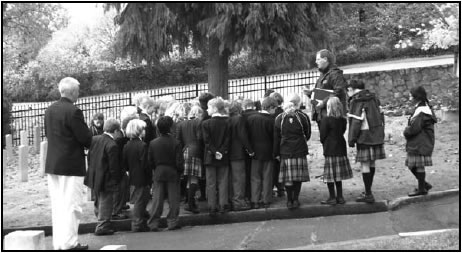
The new cemetery for the Royal Navy was divided into three sections: one for Episcopalians, one for Roman Catholics and one for Dissenters (certain Protestant denominations). A small chapel was also constructed and left unconsecrated so it could be used by all sects. The burial ground was consecrated on July 14, 1868, by the Right Reverend George Hills, the first Anglican bishop of British Columbia.
Further tension with Russia in 1889 meant that the gun batteries on Brothers Island were strengthened to better defend against the threat of the Imperial Russian Navy. To allow room for this expansion, the graves of the Royal Navy sailors buried there were moved to the new cemetery.
The Royal Artillery arrived in 1901 to aid in the defence of the Esquimalt naval base. At that time, the British War Office purchased the eastern section of the cemetery for burial of artillery officers and soldiers. Time passed and the Royal Canadian Navy and Canadian Army took over from their British counterparts, but the two sections of the cemetery continued as separate units.
In 1947, the Department of Veterans Affairs took over the 1.1 hectare (2.7 acre) cemetery and the two sections were joined to become the Veterans Cemetery. Nestled between the 12th and 17th holes of the Gorge Vale Golf Club, this unique location remains affectionately known as God's Acre.
The Chapel
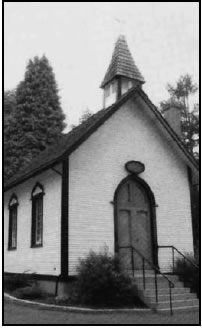
The small and charming chapel at Veterans Cemetery is nestled beneath old evergreen trees. While the building was renovated in 1945, its historic character was preserved. The construction of the chapel is unique as it made use of many different kinds of wood from around the British Commonwealth, including camphor, teak, ironwood and mahogany.
Along the walls are plaques commemorating Royal Navy ships and their crew members, many of whom are buried in the oldest areas of the tree-shaded cemetery. Old ship's lanterns, once fuelled by whale oil, hang as reminders of the days of "wooden ships and iron men." The white ensign of the Royal Canadian Navy can be seen above the altar. It is a reminder of the many Canadian ships that served under that flag—as well as the many men from those ships who died.
The chapel is temporarily closed to the public.
The Cross of Sacrifice

The large Cross of Sacrifice is a monument found in all war cemeteries in the British Commonwealth. The granite cross is sculpted in the shape of shell casings. On the front, a large bronze sword is mounted, pointing downward, to form another cross. The biblical symbolism of "turning swords into plowshares" is one that many visitors recognize.
The monument design dates to 1917. During the First World War, the Imperial War Graves Commission was founded to ensure that bodies of military personnel from the British Empire who died during war were found, identified when possible and buried with full military honours. Well-known architects were asked to submit possible designs for memorials to be erected in thousands of French and Belgian cemeteries. Sir Reginald Blomfield's winning design of the Cross of Sacrifice was chosen in part "... to emphasize the military character of the cemetery."
The Cross of Sacrifice in Veterans Cemetery was unveiled on October 27, 1961, by Maj.-Gen. George R. Pearkes. Pearkes, a Victoria Cross recipient, was a former Minister of National Defence and lieutenant-governor of British Columbia.
A Glimpse into the Past
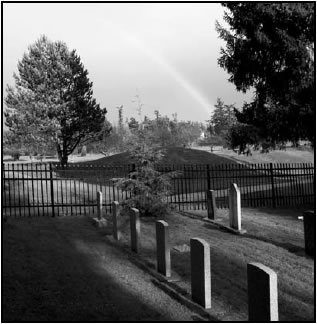
While walking through the oldest part of Veterans Cemetery, visitors will see both large, ornate stone grave markers, as well as modest small wooden or iron crosses. In God's Acre, the prominent and the common folk lay at peace, side by side.
A look at the grave markers all too often tells of men who died young—poignant evidence of the danger faced by the men who served on the tall sailing ships of the late 19th century.
However, God's Acre holds more than those who served in the navy. Members of other branches of the military also lay in Veterans Cemetery, as well as civilians, relatives of service personnel and employees of the navy in its early days. The very first person believed to be buried at God's Acre was Teresa Wade, the wife of a sergeant in the Royal Marine Artillery. She died suddenly on Coles Island (then the navy's munitions depot) in 1868. Her sandstone grave marker can still be seen today.
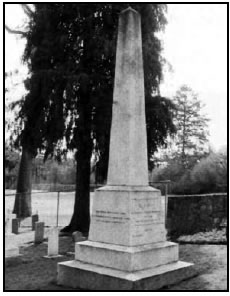
The tall marble and granite obelisk, a tapered stone pillar, located at the cemetery entrance has an unusual history. It was originally erected in 1903 by Roland Stuart, a wealthy Scottish country squire who emigrated to Canada, in memory of his mother. Little is known about Stuart, though he did build a mansion on the Metchosin estate which burned down in 1905. In 1907, the property was sold to Lt.-Gov. James Dunsmuir who then built Hatley Castle.
Stuart never served in the military. However, in 1908 the Royal Navy allowed him to move his mother's monument from Metchosin to Veterans Cemetery, where it still occupies its place of honour to this day.
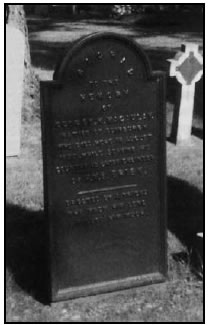
The gravestone of Chief Engineer George Macaulay is quite unique. Macaulay, who served on HMS Brisk, died at Esquimalt Naval Base in the 1860s after returning from Petropavlovsk, Russia, during the Crimean War. A black cast iron headstone from South America, picked up by Macaulay's ship on its way to British Columbia, was used for his grave. This was because there were no stone masons on Vancouver Island at this early date.
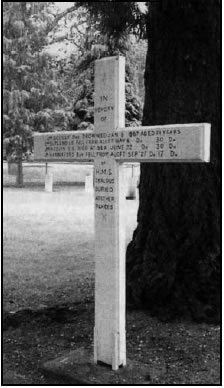
Some of the most touching grave markers are those for young men who died at sea. One of the best examples is the white wooden cross commemorating four sailors from HMS Zealous. The cross reads, "James Scully, Ordinary Seaman, 21 years, drowned; E. Butland, Leading Seaman, 30 years, fell from aloft; Joseph Medlin, Leading Seaman, 22 years, died at sea; J. Hannaford, boy, 17 years, fell from aloft." All were buried in other places in 1867 while the Zealous was sailing from England to Vancouver Island. The Zealous made the long journey to help protect British Columbia from a possible invasion by the Fenian Brotherhood, militant Irish nationalists who were active in San Francisco at the time.
Few chapters of Canadian history are as well-known as the Northwest Rebellion. One of the grave markers in God's Acre honours a man who saw action in these events. Col. James Peters commanded an artillery battery in the Battle of Batoche and at Fish Creek in 1885 against Louis Riel, a Métis leader. Riel had challenged the Canadian government to recognize Métis land claims in Manitoba and Saskatchewan. Col. Peters is also said to be one of the first people to take military action photographs. He went on to be commanding officer at Work Point Barracks until his retirement in 1910. In 1912, he became Esquimalt's first city councillor, elected by acclamation in the new municipality.
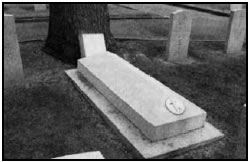
Some of the people buried in God's Acre are laying at rest far from home. A Japanese naval officer named Haruma Kusano was serving on board HIJMS Kongo when it visited Vancouver Island in 1892. Sadly, he died of pneumonia and was buried beneath a white marker at God's Acre. A grey granite ledger stone bearing the chrysanthemum symbol was later placed over his grave. To this day, if there is a visiting ship from the Japanese Navy, a commemorative ceremony is held at his grave site.
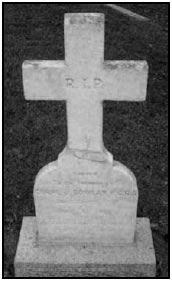
The grave markers in God's Acre tell many stories—some heroic, some tragic and some quite dramatic. The graves of Cpl. John Bowlan and gunner Charles Ratcliff have a fascinating tale behind them.
In 1910, Bowlan had a full military funeral in St. Saviour's Church and was laid to rest in Veterans Cemetery. He had been raised on the island of St. Helena and joined the British Army, eventually serving with the Royal Canadian Garrison Artillery. During his tour of duty on the West Coast, he was murdered by his friend, gunner Charles Ratcliff. It was said that Ratcliff was angry with the Corporal because he criticized Ratcliff for not keeping the kitchens at Work Point Barracks clean.
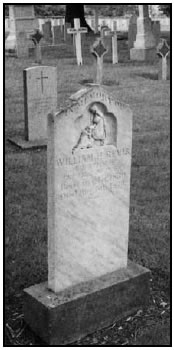
While Bowlan received a full military funeral, Ratcliff was given no funeral at all. His grave is at the lowest corner of the cemetery and is marked by a plain slab of cement. Legend has it that he was buried face down.
William Henry Bevis is one of a number of civilians who is also buried in the cemetery. He was the keeper of Fisgard Lighthouse on Fisgard Island at the entrance to Esquimalt Harbour, opposite Brothers Island. The lighthouse, built in 1859 and the first on Canada's West Coast, is now a National Historic Site. Bevis' white marble monument was created by a local carver named George Kirsop and is noted for its touching depiction of a woman in mourning.
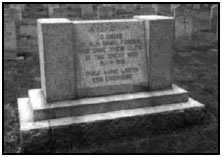
Another interesting feature in God's Acre is the square granite monument facing the Cross of Sacrifice. It commemorates His Majesty's Naval Forces in the Great War 1914-1919. The reference to 1919 is curious, since the armistice that ended the fighting in the First World War was declared on November 11, 1918. The date is believed to refer to the date of the Treaty of Versailles, the agreement that officially ended the war.
A Time and a Place for Remembering
Graveyards and granite markers are important ways to physically represent the fact that we remember the people buried at God's Acre and what they did during their lifetimes. In Veterans Cemetery, the markers—whether simple or ornate—that spread across the older portions of the grounds are permanent symbols of the respect those who served in the navy on the West Coast had for one another. That expression of admiration is still evident for all the members of the Canadian military who themselves served in the years that followed and are buried here as well.
Veterans Affairs Canada takes seriously the responsibility of maintaining these sites and encouraging remembrance. Guided walking tours of Veterans Cemetery for the public are arranged in partnership with the Old Cemeteries Society of Victoria.
New ways of showing that Canadians continue to care and remember those who served include the "Candlelight Ceremony". During this event, children accompany Veterans to place small red candles on graves in tribute to those who have done so much for our country and the world. Commemorative ceremonies like this help ensure the torch of remembrance is passed on and preserved. It also helps ensure that the memory of Canadians' accomplishments will remain strong in the hearts and minds of all Canadians.
We Will Remember Them
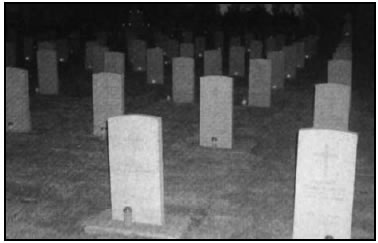
Those who have served in our military forces have achieved and sacrificed much in their efforts to help preserve our country's peace and freedom. At home and abroad, Canadians are recognized for their sacrifices and achievements, including those who have served on Canada's West Coast and on the Pacific Ocean. They have left a lasting legacy. God's Acre serves as a permanent symbol of our recognition and appreciation of what these brave people have accomplished.
Copyright
© Her Majesty the Queen in Right of Canada represented by the Minister of Veterans Affairs, 2007.
Catalogue No. V32-129/2007
ISBN 978-0-662-49811-7
Photos: Veterans Affairs Canada with the exception of page three – Provincial Archives of British Columbia.
- Date modified: